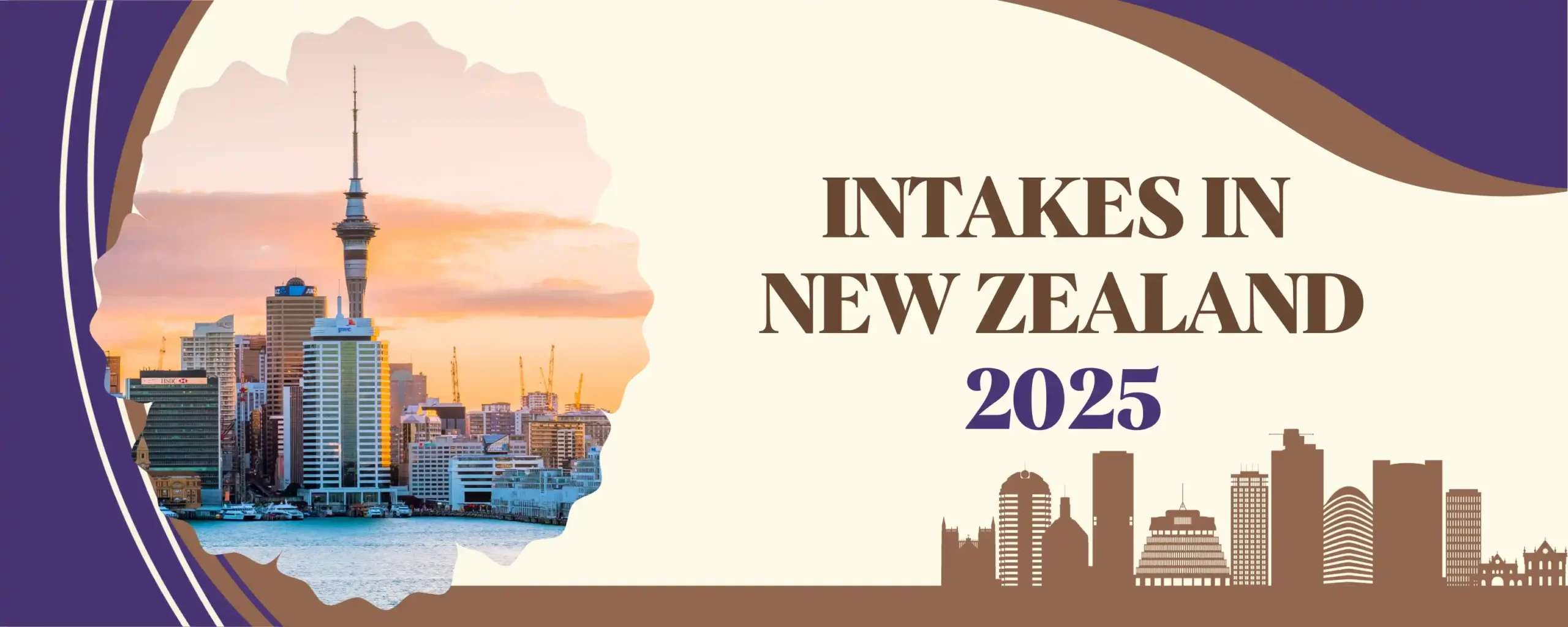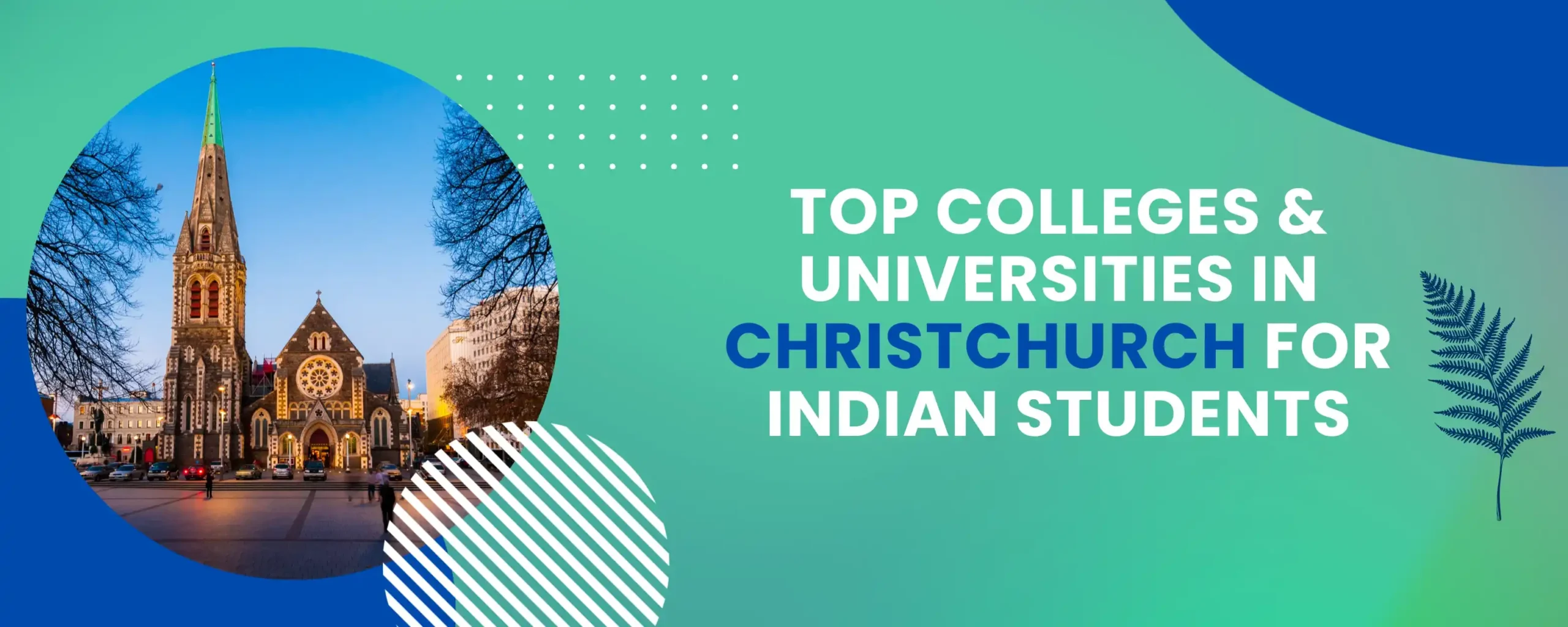When it comes to international education, New Zealand might be on top of the list for students seeking high-quality learning and promising global careers. Its world-class universities, welcoming culture, and stunning natural beauty make it even more appealing. universities fling open the doors of their institutions to thousands of international students through multiple intakes during the year, offering great flexibility. But with flexibility comes confusion — which intake is right for you? Understanding these intake cycles can increase your chances of getting into your dream university and course. So, let’s jump into details of each intake and explore their pros and cons, so that you can make a smart choice.
Why Study in New Zealand?
But first, let’s take a moment and ask ourselves, why New Zealand? There are many reasons. First of all, its educational system (following a British model) is globally recognized. This means your degrees are highly valued and it will allow you to work anywhere else in the world.
Moreover, New Zealand is known for its diverse courses, providing students with many options, from technology to arts, healthcare, technology and management. In addition, the New Zealand government actively encourages students to gain work experience, making it an ideal choice for those who want to work while studying. Not just while studying, the country presents you with numerous post-study work opportunities.
Not to mention its ranking on the Global Peace Index, the country is safe and welcoming, making the adjustment process easier for international students. Students benefit from student-friendly visa policies, safe living conditions, and affordable tuition fees. Additionally, a range of scholarships is available, making it easier for students to finance their education.
What are the Intakes in New Zealand 2025?
New Zealand offers three main intakes for international students: February, July, and September. Each intake offers a different course and has its own set of advantages and specific deadlines, so that you get the opportunity to choose the best time to begin your studies based on your individual preferences.
Below is a quick overview of Intakes in New Zealand.
- February Intake: This is the primary New Zealand intake for international students and offers the widest range of courses. This intake is also known as the Autumn intake.
- July Intake: A mid-year entry option that provides a good selection of programs but is limited compared to February intake. This intake is also known as the Spring intake.
- November Intake: This is a smaller intake with a limited number of courses. It is ideal for specific programs that may not be offered in the first two intakes. This intake is also known as the Winter intake.
Additionally, New Zealand offers rolling intakes, also known as flexible intakes, which allow students to start their courses at different times of the year. This flexibility is great for students who need to consider visa processing times, personal commitments, or work schedules.
February Intake in New Zealand
The February intake is the primary and major admission period in New Zealand. Most universities open their full range of UG, PG and Diploma programs during this intake, making it ideal for students with a wide range of interests. This intake also often provides better opportunities for securing scholarships, as more funding is usually allocated for the main academic start and internship opportunities, as students enter the job market during a peak hiring season in New Zealand.
Key Deadlines: Applications usually open around August-September of the previous year and typically close by November-December 2024. For some highly competitive courses, deadlines can be even earlier.
Top Universities & Programs: Top institutions like University of Auckland, University of Otago, and Victoria University of Wellington, offer admissions in February providing maximum options for applicants in various fields like Engineering, Business, IT, Arts, and Health Sciences.
Benefits of February Intake
Choosing the February intake comes with several exciting advantages.
- You’ll have the widest selection of course options and university seats available, increasing your chances of getting into your dream program.
- This intake also often provides better opportunities for securing scholarships, early admission benefits and part-time internship opportunities
- If you start your studies in February, you graduate sooner, which can be an advantage if you want to enter the job market sooner.
- Plus, the weather conditions are favorable for newcomers, making your transition to New Zealand more comfortable and enjoyable.
July Intake in New Zealand
The July intake is the most popular New Zealand intake for international students. Known as the secondary intake, it offers flexibility for those who may have missed the February intake or prefer a mid-year start. While fewer courses are available compared to February, July intake covers a good variety of programs and specific postgraduate options, particularly in research-focused disciplines. It is an excellent New Zealand masters intake.
Application Deadlines: Applications generally open around February 2025 and often close by late April to May 2025. Always check specific university websites for precise dates.
Universities & Programs: Most New Zealand institutions like Massey University, Lincoln University, and the University of Waikato accept students during this time.
Benefits of July Intake
- Fewer applicants compared to the February intake, leading to easier admission chances.
- The July intake gives students additional time for their test preparation (like IELTS/PTE), gathering documents, submitting applications, and securing funding.
- Arriving in July gives you a chance to experience the cooler months in New Zealand, making it easier to adjust and settle in before the summer semester starts.
- While potentially fewer than February, there can still be scholarships and part-time work opportunities available.
September Intake in New Zealand
The September Intake, generally considered a minor intake in New Zealand with a more limited number of universities and courses available. It is the smallest and least popular intake, usually catering to specific short-term postgraduate certificates or diploma programs. This intake can be a great fit if you’re looking for specialized courses or more flexible start dates.
Application Deadlines: Deadlines vary widely but generally fall around July 2025.
Availability: Fewer universities, such as Victoria University of Wellington and some polytechnics, might offer programs.
Benefits of September Intake
- This intake often caters to specific or short-term courses.
- Since the intake is smaller, you might experience smaller class sizes, leading to more personalized attention and better learning.
- This intake might be a good option for those who need more time to prepare for language tests or financial planning.
- It also offers an opportunity to enter the job market at a different time, which could be an advantage depending on industry hiring cycles.
How to Choose the Right Intake?
With multiple intakes available, it can get a bit confusing to choose which intake is best for you. Here are some key factors to consider while making a decision:
- Course Availability: Check the course availability in your preferred university and intake.
- Academic Readiness: Consider how much time you need to get your documents ready, such as standardized tests, academic records etc.
- Visa Processing Time: Don’t forget visa processing times for your country; give yourself ample buffer time that aligns with your intake.
- Job Opportunities: Align your intake choice with potential part-time job opportunities. The February intake may offer more options as it coincides with the start of the academic year.
- Scholarship Opportunities: Some intakes may offer more scholarships and funding opportunities.
If you are still in doubt, reach out to expert education consultants who can guide you based on your academic and financial profile.
Timeline for Intakes in New Zealand
The application process for different intakes in New Zealand usually begins early. And it is different for each intake. So, being aware of application deadlines and university schedules can enhance your chances of securing a place in your desired course and intake period.
| Actions | February Intake | July Intake | September Intake |
| Research universities & courses | June – Aug 2024 | Dec 2024 – Jan 2025 | Mar – Apr 2025 |
| Prepare for English proficiency tests | Sept – Oct 2024 | Feb – Mar 2025 | May – June 2025 |
| Submit university applications | Nov – Dec 2024 | Apr – May 2025 | June – July 2025 |
| Receive offer letters & apply for scholarships | Dec 2024 | May – June 2025 | July – Aug 2025 |
| Apply for student visa & prepare for departure | Jan – Feb 2025 | June – July 2025 | July- Aug 2025 |
| Classes commence | Feb – Mar 2025 | July – Aug 2025 | Sept 2025 |
Conclusion
Now that you know everything about the different intakes, it will be easier for you to decide which intake will suit you. Selecting the right intake can make your admission and academic journey smooth. Always remember to start planning early and keep a close eye on those crucial deadlines. And to make your journey even smoother, take guidance from La Forêt Education that can help you in selecting courses to visa application process and everything in between.
Frequently Asked Questions
1. How many intakes are there in New Zealand?
Ans: New Zealand offers three main intakes for international students: February, July, and September. February is the primary intake with the widest course options, while July serves as a secondary intake. The September intake is smaller, ideal for specific short-term or diploma programs.
2. What are the requirements for New Zealand Intake 2025?
Ans: To apply for the 2025 intakes, students generally need:
- Academic transcripts and certificates
- Proof of English proficiency (IELTS/TOEFL/PTE)
- Valid passport
- Statement of Purpose (SOP)
- Letters of Recommendation (LORs)
- Proof of funds and health insurance
Universities may have specific requirements, so it’s essential to check individual course pages or seek expert advice.
3. How long does it take to get a student visa for New Zealand 2025?
Ans: The New Zealand student visa process usually takes around 4 to 6 weeks, but it can vary based on the time of year and application volume. To avoid delays, apply at least 2–3 months before your intake begins and ensure all documents are accurate and complete.





